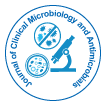

Samyah Jastaniah
Saline habitats like Dead Sea have unusual extreme environments, due to their extreme salinity. Most saline habitats originate from the evaporation of seawater and have nearly neutral to slightly alkaline pH (such as the Red Sea pH 8.3 and Arabian Gulf, pH 8.3). Ten halophilic bacterial strains (two gram-negative) belonging to the family of Halomonadaceae and (eight gram-positive) belonging to the family of Bacillaceae were isolated from the Red Sea, Arabian Gulf and Dead Sea by subjecting the isolates to a high salinity medium followed by identification using 16S rRNA gene sequencing. Four of isolates were designated on the basis of their tolerance to high salinity; SBR1 exhibited 97% homology to Halomonas aquamarina, SBR2 showed 97% homology to Sediminibacillus sp., (Red Sea), SBA9 exhibited 94% homology to Halobacillus sp., (Arabian Gulf) and SBD17 gave 98% homology to Halobacillus dabanensis (Dead Sea). The isolates were also characterized by their physiological parameters, SBR1 showed optimum growth at 30°C, pH 8.5 and 1.5 M NaCl, SBR2 at 30°C, pH 6.0 and 1 M NaCl. Optimum conditions for SBA9 were 35°C, pH 6.5 and 1 M NaCl and for SBD17, 37°C, pH 7.0 and 1 M NaCl.